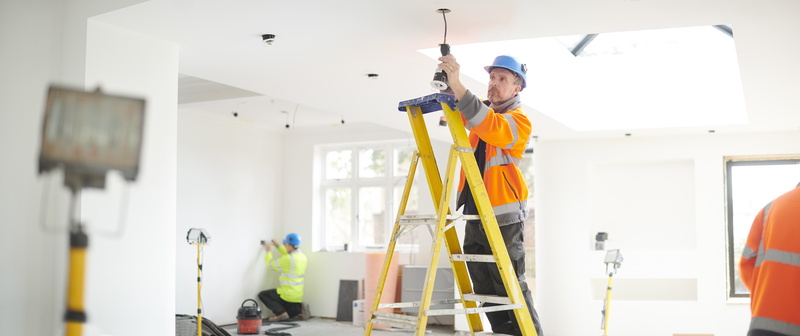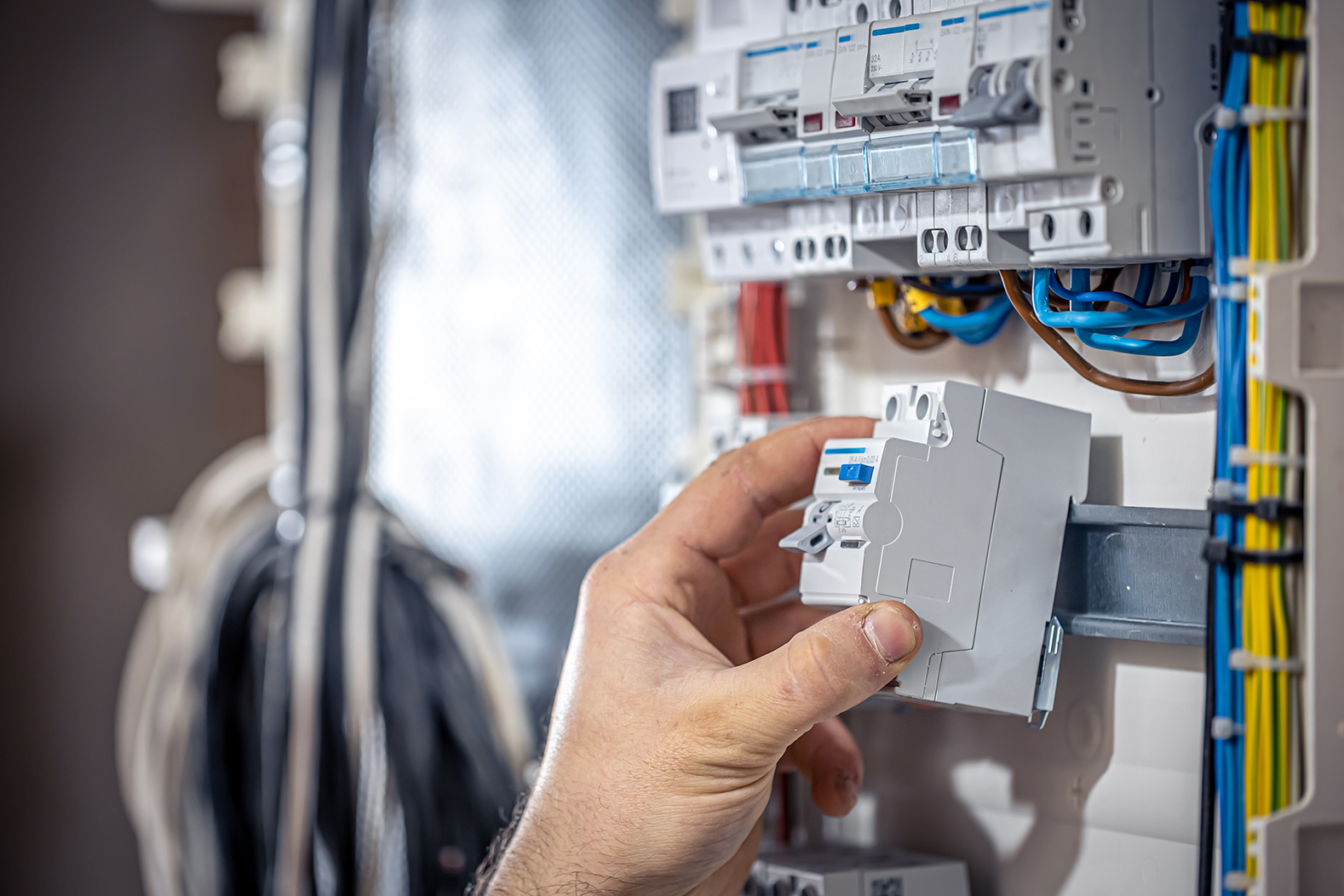Common Electric Issues Every Homeowner Need To Learn about
Property owners commonly run into various electric troubles that can influence security and capability. Problems like flickering lights and stumbled circuit breakers are much more typical than lots of realize. These scenarios can indicate much deeper electrical issues that warrant interest. Comprehending the threats and indications linked with obsolete wiring and dead electrical outlets is important. What steps can be taken to stop these issues? Exploring these usual electric issues can reveal crucial insights for keeping a risk-free home setting.

Flickering Lights: Reasons and Solutions
Why do some property owners experience flickering lights? Flickering lights can be a typical nuisance, often suggesting underlying electric concerns. One primary cause is faulty or loosened connections within light components or electrical wiring, which can cause recurring power supply. Additionally, utilizing high-wattage devices on the exact same circuit may cause voltage fluctuations, causing flickering or lowering. One more potential problem is an overloaded circuit, where also lots of tools attract power simultaneously, straining the electrical system. Out-of-date or degraded electrical wiring can add to inconsistent electrical circulation. In many cases, flickering lights may signify a problem with the home's electrical panel or solution line. Homeowners ought to deal with flickering lights quickly to avoid potential threats. Solutions may include tightening up links, redistributing device load, or consulting a licensed electrical contractor for a thorough assessment. Identifying the origin can assist assure a secure and secure electric system in the home.
Tripped Circuit Breakers: What You Need to Know
Have house owners ever before questioned what causes their breaker to journey unexpectedly? This common concern often emerges from an overload of electrical circuits, where as well lots of gadgets draw power simultaneously. In such situations, the breaker functions as a safety system, interrupting the circulation of electricity to stop overheating and possible hazards. One more constant cause is a brief circuit, which happens when a real-time wire contacts a neutral wire, producing a surge of electrical power that trips the breaker. Ground faults can also result in stumbled breakers; these happen when a real-time cord touches the ground or a grounded surface, positioning severe safety risks. Property owners must on a regular basis assess their usage of high-wattage appliances to prevent straining circuits. In addition, recognizing the feature of circuit breakers can aid them react properly during a journey, guaranteeing their home continues to be safe and well-maintained.
Outdated Circuitry: Dangers and indications
Outdated circuitry can present significant threats to house owners, usually going undetected till troubles develop. Houses built before the 1980s might still have light weight aluminum electrical wiring or knob-and-tube systems, which are no more taken into consideration secure. Indicators of obsolete wiring include flickering lights, frequently tripped breaker, or melting smells near electrical outlets. These signs might suggest that the electrical system is loaded down or deteriorating.Additionally, home owners may notice blister marks around buttons or electrical outlets, which can indicate overheating. The danger of electrical fires significantly increases with out-of-date circuitry, as these systems were not created to manage modern-day electrical loads. Homeowners are urged to have their electrical wiring inspected regularly, specifically when renovating or adding new appliances. By identifying these signs early, they can avoid unsafe scenarios and keep a more secure living environment. Upgrading to existing electrical standards is a proactive action in preserving home safety and effectiveness.
Frequently Blown Fuses: Fixing Tips
Regular blown merges can suggest underlying electric problems that may come from outdated electrical wiring or overloaded circuits. Home owners experiencing this trouble should first recognize the devices connected to the affected circuit. It is a good idea to stay clear of utilizing several high-wattage gadgets simultaneously, as this can lead to circuit overload. If the trouble lingers, inspecting the circuit box for indications of wear or damages is crucial; a damaged fuse box might require replacement.Additionally, looking for loosened connections within the circuit can assist protect against future incidents. Property owners must also confirm that the integrates being made use of are of the appropriate amperage, as using a wrong fuse can worsen the trouble. If these repairing suggestions do not resolve the concern, consulting a qualified electrician is suggested to review the electric system even more. Attending to these worries without delay can assist alleviate dangers and guarantee the safety of the home's electric framework.
Dead Outlets: Common Reasons and Repairs
When a property owner encounters a dead outlet, it can often provide aggravation and confusion. Several common reasons may bring about this issue. One regular offender is a stumbled circuit breaker, which can be conveniently reset. If any kind of breakers are in the off setting, house owners ought to evaluate their electrical panel to check. One more web link opportunity is a malfunctioning electrical outlet itself, which may require replacement. Furthermore, loose wiring links within the outlet can interfere with power circulation, making inspection essential.Sometimes, the trouble might stem from an overloaded circuit, particularly when several gadgets are linked. In such instances, rearranging the electrical lots can deal with the concern. Homeowners need to also consider the age of their wiring; older systems might call for updates to satisfy contemporary electric needs. If these actions do not fix the scenario, getting in touch with an accredited electrical expert is a good idea to assure safety and security and correct medical diagnosis.
Electric Shocks: When to Be Worried
Just how can house owners figure out whether an electrical shock warrants concern? Home owners should first analyze the extent and context of the shock. A mild fixed shock, commonly felt when touching metal items, is typically harmless and common. Nonetheless, if the shock happens while connecting with a plugged-in appliance or outlet, it may suggest a much more major issue.The place and regularity of the shocks are crucial. Repeated shocks from the same resource, specifically in wet areas like shower rooms or kitchen areas, might signal faulty circuitry or inadequate grounding. Home owners ought to additionally consider the experience of the shock; a shock that causes pain or muscle contractions is a lot more disconcerting than a simple tingle.If there's any uncertainty, it is recommended to speak with a certified electrician. Neglecting possible electrical risks can lead to major safety and security risks, consisting of fire or serious injury.
Overloaded Circuits: Prevention and Precaution
Overloaded circuits posture significant risks in domestic setups, typically bring about electrical fires or tools damages (Sydney Level 2 Electrician). House owners have to acknowledge the indicators of an overloaded circuit, such as regularly tripped breakers or dimming lights. Carrying out preventative security practices can aid mitigate these hazards and ensure a much safer living atmosphere
Acknowledging Overloaded Circuits
What signs suggest that a circuit may be strained? House owners should be watchful for a number of crucial indications. Regularly tripped breaker or blown fuses suggest too much load on the circuit. Lowering or flickering lights, specifically when other home appliances remain in use, can represent an insufficient power supply. In addition, electrical outlets or switches that really feel cozy to the touch may show overheating, a possible fire hazard. Uncommon buzzing audios from electrical outlets additionally necessitate attention, as they can indicate electrical issues. Ultimately, if devices operate inefficiently or fail to begin, it might be an indication of an overloaded circuit. Acknowledging these indications early can assist prevent serious electrical problems and advertise a much safer home setting.
Preventive Safety And Security Practices
To keep a secure and efficient electric system, home owners have to carry out preventative safety and security methods that attend to possible circuit overloads. One efficient measure is to avoid connecting way too many tools to a single electrical outlet, as this can go beyond the check my site circuit's capability. Utilizing power strips with integrated circuit breakers can aid distribute power safely. Homeowners must additionally routinely evaluate cables and devices for damages and change any type of damaged equipment immediately. It is crucial to ensure that breaker are functioning correctly and to be mindful of the complete electrical power being used in each circuit. Furthermore, speaking with a licensed electrical expert for routine examinations can identify potential problems before they escalate, guaranteeing a safer living setting and extending the life expectancy of electric systems.
Regularly Asked Inquiries
How Frequently Should I Have My Electrical System Inspected?
Normal assessments of electrical systems are recommended every 3 to five years. House owners ought to think about extra frequent checks if they experience issues, take on remodellings, or stay in older buildings to assure safety and conformity.
Can I Repair Electrical Problems Myself or Work With a Specialist?

What Are the Indications of an Electrical Fire Danger?
Signs of an electrical fire threat consist of frequently stumbled circuit breakers, flickering lights, burning odors, tarnished outlets, or warm, buzzing cords. Home owners should remain cautious and seek professional assistance if any of these indicators exist.
How Do I Know if My Home Demands an Electrical Upgrade?
To identify if a home requires an electric upgrade, indications include regular circuit breaker journeys, outdated wiring, inadequate electrical outlets, flickering lights, and the visibility of older electrical panels, suggesting potential security threats and inadequacy.
Are There Details Safety And Security Tips for DIY Electric Work?
When considering DIY electrical job, one need to always switch off power, make use of shielded tools, verify circuit performance, follow neighborhood codes, and get in touch with experts for intricate jobs to assure safety and security and stop crashes. An additional prospective concern is an overloaded circuit, where as well numerous devices draw power concurrently, straining the electric system. The risk of electrical fires noticeably increases with out-of-date circuitry, as these systems were not developed to manage modern electric lots. Constant blown merges can show underlying electric problems that may stem from outdated electrical wiring or overloaded circuits. To maintain a safe and effective electrical system, property owners have to execute preventive safety and security techniques that deal with prospective circuit overloads. Accredited Service Provider Level 2 Electrician. Indications of an electrical fire risk consist of frequently stumbled circuit breakers, flickering lights, melting odors, blemished outlets, or cozy, humming cords